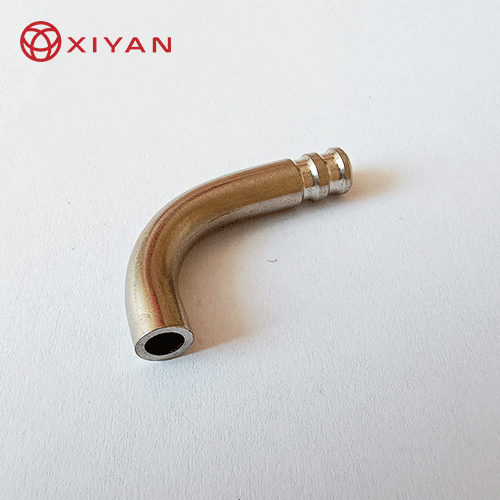Industry news
Stainless Steel Capillary Tubes: How to Bend and Machine Them
Stainless steel capillary tubes come in various shapes and sizes, including round, square, irregular, and bent tubes. Today we will discuss how to adjust, cool, lubricate the cutting tools, and other precautions when bending stainless steel capillary tubes.

I. Processing methods for stainless steel capillary tubes
Flanged and circular-flanged pipes: the former refers to the protrusion of the end of the stainless steel capillary tube inward or outward, and the latter refers to the formation of a raised or grooved structure in the circumferential direction of the stainless steel capillary tube.
Variable wall thickness stainless steel capillary tubes: the wall thickness changes along the length of the tube.
Bent stainless steel capillary tubes: typically, a straight stainless steel tube is transformed into different curved radius bends, such as elbows and bends.
Twisted and narrowed diameter stainless steel capillary tubes: the diameter of the pipe end or a certain part of the pipe is narrowed.
Rolled edge and sealed end stainless steel capillary tubes: these types of tubes increase the overall strength of the stainless steel capillary tube by curling the edge to the outer or inner side of the tube or sealing the end of the tube.
Processing the cross-section of stainless steel capillary tubes: changing a circular cross-section into a square, elliptical, or polygonal shape.
II. Difficulties in machining stainless steel capillary tubes
When machining stainless steel capillary tubes, there are many difficulties. First, during processing, the friction between the workpiece and the cutting tool generates high heat, which can quickly wear down the tool. Therefore, the cutting tool material has to meet strict requirements, such as being wear-resistant and heat-resistant while maintaining a sharp edge.
The second challenge is the slow machining speed because the cutting force is high, resulting in low production efficiency. Additionally, due to the high heat generated during processing, a suitable cooling oil is crucial. Chlorinated sulfur is commonly used as it is effective. The most challenging task is drilling deep holes and tapping threads. Therefore, when machining stainless steel capillary tubes, the worker's experience and skills must be excellent.
III. Precautions for machining stainless steel capillary tubes
First, attention should be paid to the machining properties of stainless steel. Stainless steel has high plasticity and toughness, and cutting it requires a lot of energy. The cutting temperature is high, and its thermal conductivity is low. Poor heat dissipation can easily lead to an increase in the tool's temperature. Stainless steel has strong adhesion and tenacity, and cutting it often produces chips and lumps. It is prone to hardening during processing, and the cutting surface easily generates a hardening layer. It is not easy to break stainless steel chips, and they can clog the cutting tool, affecting the surface finish.
Second, the cutting tool used for stainless steel should have a small front angle, typically between 12-30 degrees. Grinding a crescent-shaped chip guide groove in front of the tool can improve the cutting conditions. The back angle for hard alloy turning tools should be between 6-10 degrees, and for high-speed steel turning tools, it should be between 8-12 degrees. The main relief angle should be between 60-75 degrees, and the secondary relief angle should be between 8-20 degrees. The main relief angle should be greater than zero during rough turning and less than zero during finish turning. The tool tip radius is typically 0.2-0.8mm.
Third, cooling lubrication during cutting stainless steel is essential. It is necessary to use lubricating fluids with good cooling and lubrication properties to reduce toolensures a good cutting performance and prevents overheating of the cutting tools.
Finally, it is important to note that during the processing of stainless steel capillary tubes, attention should be paid to safety measures to avoid accidents. Operators should wear protective gear such as gloves, goggles, and masks to prevent injury from sharp edges and flying debris. The working area should be well-ventilated to prevent inhalation of harmful fumes and dust. Proper handling and storage of the finished products should also be observed to prevent damage and ensure their quality.
In conclusion, stainless steel capillary tubes come in various forms and are used in a wide range of applications. Processing these tubes can be challenging due to the material's properties, and proper adjustment, cooling, lubrication, and tool selection are critical to achieve good results. By following the necessary precautions and safety measures, workers can ensure a safe and efficient working environment while producing high-quality stainless steel capillary tubes.
CATEGORIES
LATEST NEWS

CONTACT US
Contact: Megan
Phone: +86-18660878685
E-mail: info@xiyanpipe.com
Whatsapp:+8618660878685
Add: Zhongshanggao Industrial Park,the east end of Panhe street,Taishan district,Tai'an city,Shandong Province,China
